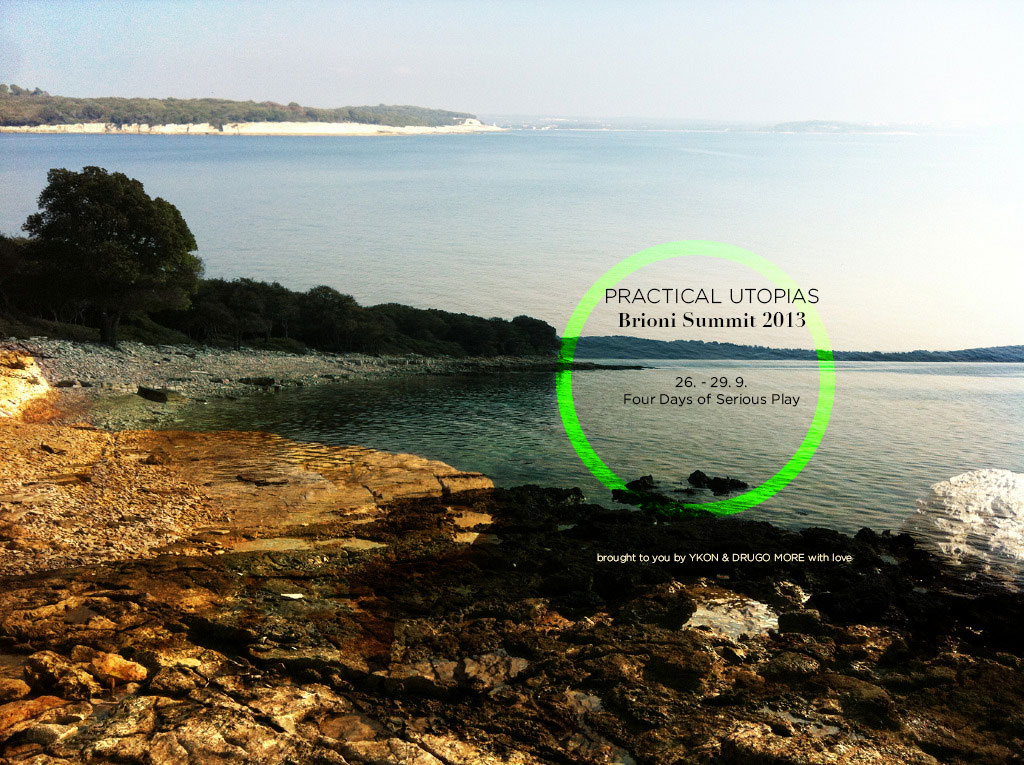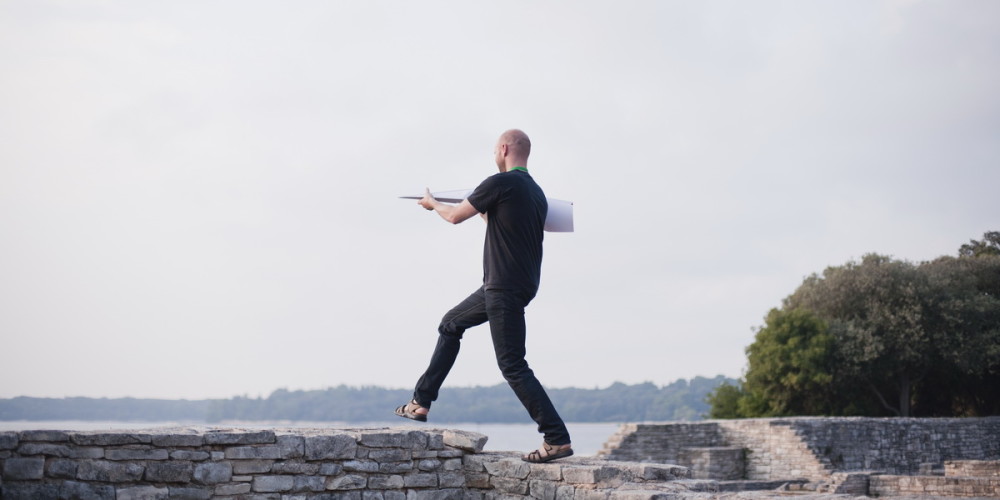The Summit of Practical Utopias 26—29 September 2013 in Brioni Island, Croatia
Organised by YKON, Drugo More and Electra
The Summit of Practical Utopias gathered 35 activists, artists, game designers, researchers and visionaries on the island of Brioni, President Tito’s former summer residency in the Croatian Adriatic Sea. Organised as a collaboration between YKON (FIN/DE) and Drugo More (CRO) in dialogue with Electra (UK), the three-day Summit took the form of a reality game where game rules, rather than summit conventions, defined the interactions between participants or players.
The Summit of Practical Utopias was born out of the legacy of The First Summit of Micronations, held in Helsinki in 2003. Kings, presidents and representatives of ‘self-made’ countries such as The Principality of Sealand, Ladonia, NSK-State, Kingdoms of Elgaland & Vargaland, Transnational Republic and State of Sabotage met each other in an unprecedented three-day exchange.
The participants in the 2013 Summit of Practical Utopias represented a wide cross-section of contemporary Utopian practices. Find out about the participants here
PRACTICAL UTOPIA
The term was coined specifically for the Summit. It reflects the desire to change the current system of society by developing alternative proposals that outline the first practical steps towards long-term processes of change. Practical Utopia insists on the necessity of Utopia as an intellectual concept interlinking the fantastical and the pragmatic in bringing about social, political and artistic change.
THE GAME
Replacing conventional conference formats, the Summit will use game design to provide a playful yet serious system of exchanges. The sights and infrastructures on the Island will be turned into a playground that will support the players to collaborate in novel ways.
The game is designed by the artist collective YKON and inspired by Buckminster Fullers’ ‘World Game’ (1961). It was created as a proposal for an alternative system of pedagogy: a game, rather than a curriculum, as the main platform of learning. It was intended as a tool to formulate competing, comprehensive design-science approaches that would “solve all the problems on Planet Earth.”
BRIONI
Initially a stone quarry, and later a luxury retreat for the wealthy, the archipelago became Josip Broz Tito’s summer residence after World War II. Tito was the central figure in Yugoslavia’s experiments with organisational structures, experiments which profoundly transformed its society. Brioni played a crucial role in the forging of the Non-Aligned Movement, and was the site where self-managerial socialism met international celebrities and world leaders. This beautiful and provocative Island speaks both of the possibility of imagining alternative systems, of restructuring social life, whilst simultaneously problematising this desire.



